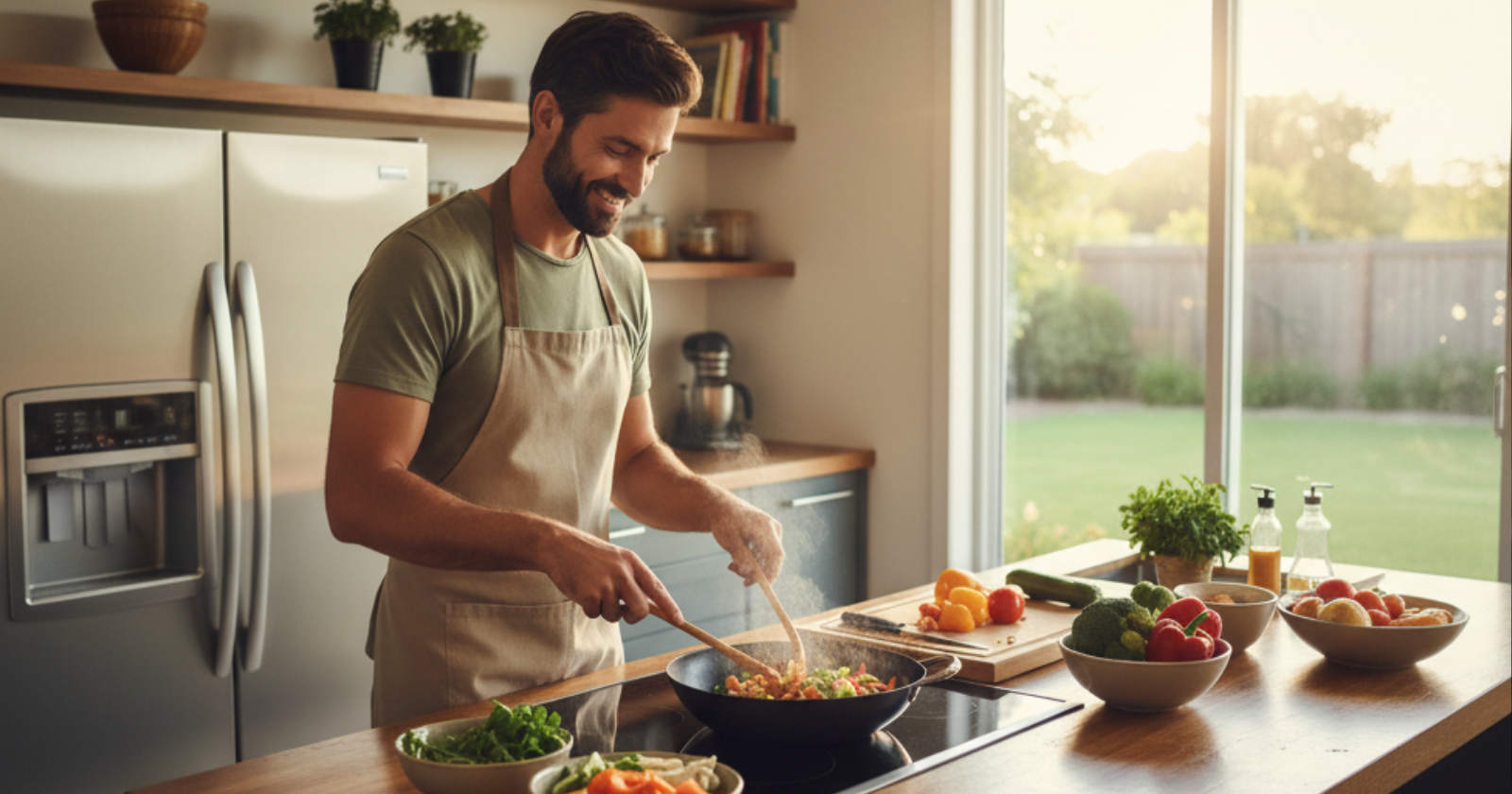7 high-protein vegetarian foods every non-meat eater should stock up on
Protein. It’s the word that always comes up when people find out you don’t eat meat. “But where do you get your protein?”
If I had a dollar for every time I’ve been asked that question, I could probably buy out my local grocery store.
The truth is, protein isn’t just something you get from steak or chicken breasts. There are plenty of vegetarian sources that pack just as much punch—sometimes even more.
The key is knowing what to stock your kitchen with so you never feel like you’re running on empty.
Let’s walk through seven high-protein vegetarian foods that every non-meat eater should keep on hand.
1. Lentils
I first fell in love with lentils in India. Every roadside stall seemed to have its own version of dal—sometimes spicy, sometimes buttery, sometimes cooked down until it was practically soup.
And no matter how different the flavors were, one thing stayed the same: it kept me full for hours.
A single cup of cooked lentils has around 18 grams of protein. That’s basically the same as three eggs.
The bonus? They’re loaded with fiber, iron, and folate, which means they’re not just filling, they’re fueling your body in multiple ways.
The best part about lentils is how versatile they are. You can toss them into soups, stews, or even salads.
I like to cook a big batch on Sunday, then season them differently throughout the week—Mexican-style with cumin and lime one day, Italian-style with garlic and tomato the next.
If you’re not using lentils as a base food in your week, you’re missing out on one of the easiest, cheapest, and most protein-packed ingredients out there.
2. Chickpeas
You know what’s underrated? Roasted chickpeas. They’re crunchy, salty, and they’ll give you about 15 grams of protein per cup.
That’s a snack that actually works for your muscles instead of just spiking your blood sugar.
Of course, chickpeas are also the backbone of hummus, which has probably converted more people to vegetarianism than any lecture on sustainability ever could.
Pair hummus with some pita and vegetables, and you’ve got a protein-rich meal that doesn’t feel like “health food.”
Chickpeas also store well, which makes them an ideal pantry staple. Keep canned ones around for convenience, or soak dried ones overnight if you want better texture. Either way, they deserve a permanent spot in your kitchen.
3. Quinoa
Here’s a trivia fact to impress your foodie friends: quinoa isn’t actually a grain—it’s a seed. And it’s one of the few plant foods that contains all nine essential amino acids, which makes it a complete protein.
One cup of cooked quinoa gives you about 8 grams of protein, plus magnesium and manganese, which your body loves for energy production.
I’ve mentioned this before in another post, but I’ll say it again: swapping out rice for quinoa a few times a week changed my energy levels. I used to hit that 3 p.m. slump like clockwork. Quinoa gave me a slow, steady burn instead of a spike and crash.
It also cooks in under 20 minutes, which is a godsend on weeknights. Toss it with roasted vegetables, mix it into soups, or make a breakfast porridge out of it with almond milk and fruit.
Once you realize how many different ways you can use quinoa, it becomes a kitchen no-brainer.
4. Greek yogurt
Some vegetarians skip dairy, but for those who don’t, Greek yogurt is a protein powerhouse. A single cup has around 20 grams of protein, plus probiotics that are great for your gut health.
I got into Greek yogurt when I was training for a half marathon. It became my go-to post-run snack. A little honey, some walnuts, and berries mixed in—it felt indulgent, but it also gave me the recovery boost I needed.
Research backs this up too. As noted by health experts, consuming protein-rich foods like Greek yogurt after exercise can help with muscle repair and overall performance.
Pro tip: avoid the sugary flavored versions and buy plain. That way you can dress it up sweet or savory depending on your mood.
5. Tofu
Tofu is one of those foods people either love or claim to hate. Usually, the haters just haven’t had it cooked right.
When tofu is pressed properly and marinated, it soaks up flavor like a sponge. Then you can crisp it up in a pan, bake it, or even grill it.
It offers around 10 grams of protein per half-cup serving, and it’s one of the best ways to add heft to a vegetarian dish.
I still remember my first “aha” tofu moment: a smoky, charred tofu skewer from a street stall in Chiang Mai, Thailand. It changed the way I looked at soy forever.
Tofu also contains isoflavones, plant compounds that have been linked to lower risks of heart disease. So it’s not just protein—it’s protection.
If you’re serious about eating vegetarian and keeping your protein up, tofu is one ingredient you should never dismiss.
6. Edamame
Before I went vegetarian, my idea of a snack was nachos or chips. Then I discovered edamame at a Japanese restaurant.
Lightly salted, still in their pods, steaming hot—they were addictive. And each cup packs about 17 grams of protein.
Edamame are immature soybeans, which makes them a great whole-food option compared to highly processed soy products. They’re also full of iron, calcium, and vitamin K, all of which your body needs for strength and bone health.
You can buy them frozen, microwave them in minutes, and have a protein-rich snack that beats chips any day of the week.
7. Tempeh
If tofu is the gateway soy product, tempeh is its cooler, funkier cousin. Made from fermented soybeans, it has a nutty, earthy flavor and a chewy texture that works well in stir-fries, sandwiches, or crumbled into chili.
One cup of tempeh has a whopping 30 grams of protein. That’s more than a chicken breast. And because it’s fermented, it also helps with digestion.
When I was living in Indonesia, I noticed tempeh wasn’t treated as some health food—it was just normal.
Kids ate it, parents ate it, street vendors sold it by the chunk. That normalized it for me, and ever since, I’ve treated it as one of the most underrated protein staples in my kitchen.
Tempeh can feel intimidating if you’ve never cooked it, but once you slice it thin and pan-fry it with soy sauce and garlic, you’ll see how easy it is to turn it into something craveable.
Final thoughts
Stocking up on high-protein vegetarian foods isn’t about chasing numbers—it’s about creating meals that satisfy and sustain you.
The best part? These foods aren’t rare or exotic. They’re accessible, affordable, and versatile.
Protein keeps you full, fuels your body, and helps you feel strong. And when you build your meals around lentils, chickpeas, quinoa, Greek yogurt, tofu, edamame, and tempeh, you’ll never have to answer the “where do you get your protein?” question with anything other than a smile.




